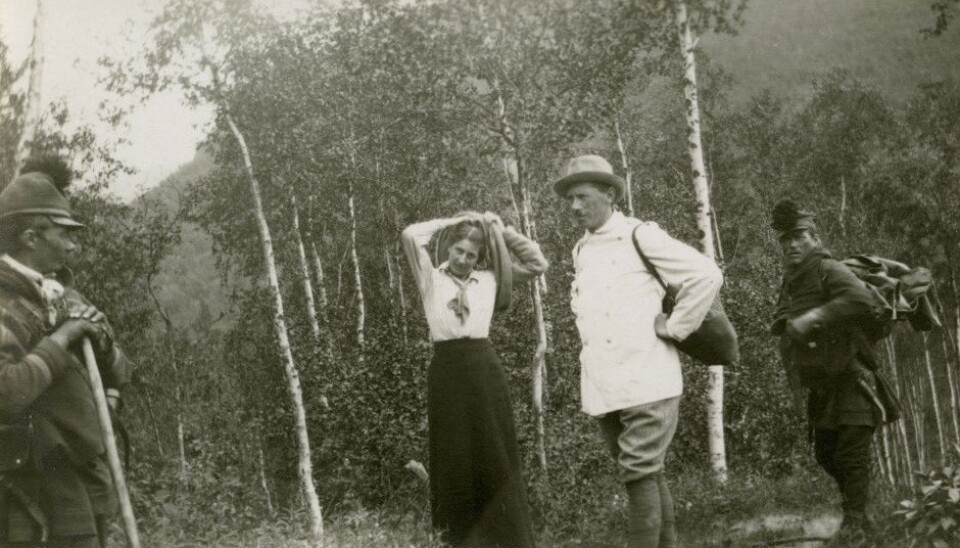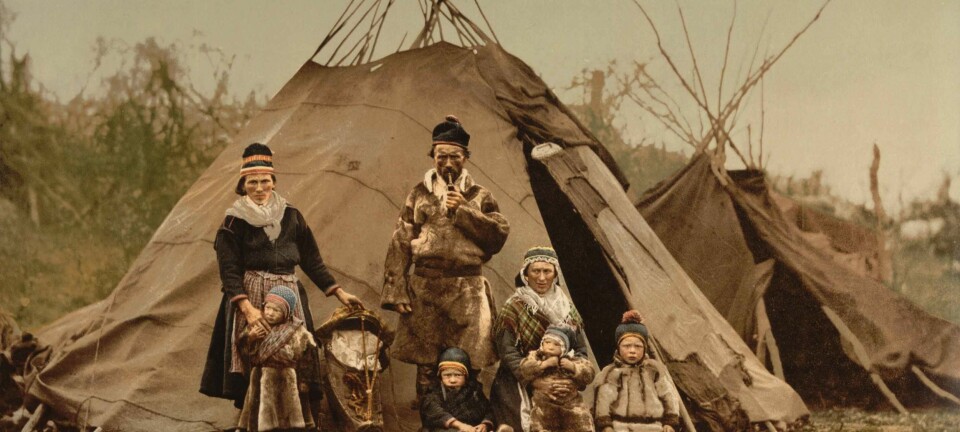
The geologist who wanted to understand the Sami
While his scientific contemporaries were exhuming skulls from Sami graves to measure them, the Finnish geologist and amateur anthropologist Väinö Tanner tried to see the Skolt Sami through their own eyes.
A century ago, a Finnish geologist named Väinö Tanner was appointed by the government to explore the country’s northern reaches. Along the way, he gave himself a not-so-typical task: as he explored Lapland, he decided, he would try to understand its people, the Sami, as they understood themselves.
Today we would think nothing of this approach. But around the turn of the last century, when field scientists dressed in knickers and double-breasted jackets and used skull measurements as a way to classify different races, Tanner’s approach was positively radical.
“He was one of the first researchers who tried to understand Sami communities based on their own terms,” says historian Jukka Nyyssönen.
Nyyssönen is an associate professor at UiT the Arctic University of Norway, and is writing a book about Tanner. The Tromsø Museum has a large Tanner archive, including books, letters and photographs, along with other researchers’ descriptions of him.
Geologist and anthropologist

He was a contradictory man, Väinö Tanner. Educated as a geologist, self-appointed as an anthropologist. Concerned about race and simultaneously acting as a cheerleader for the Sami. A dilettante and yet deeply scientific.
“He managed to get the Sami to speak up, but it appears he lacked the people skills to have any lifelong friendships,” says Nyyssönen.
Born in 1881, the young Tanner built his research career at the time when researchers were in the midst of exploring the indigenous people of the northern regions.
It was a little by chance that Tanner came to be one of the researchers who knew the Skolt Sami the best.

Between 1924 and 1931 he was the state geologist in Pechenga, a Russian region in Pasvikdalen near Kirkenes that belonged to Finland at the time. His real job was supposed to be mapping bedrock and soils with an eye to exploiting mineral resources in the area.
But he had previously been head of two reindeer commissions in other Sami areas, which fueled his interest in the Sami way of life.
Twenty-five summers with the Sami
Much like other scientists of his day, he collected information about the Sami once he was in Pechenga. In this unfamiliar landscape he hired Eastern Sami as helpers, and reportedly discovered that the population was not nearly as drunken and degenerate as it had been portrayed —at least according to an online exhibit from the Finnmark County Library.
In total, he spent 25 summers among the Skolt Sami, or Eastern Sami as they are often called today.
This group has traditionally lived in the border areas between Norway, Finland and Russia. It has its own language and a culture that differs from the North Sami. The Eastern Sami use the Cyrillic alphabet and belong to the Russian Orthodox Church.
Today, this group of indigenous people is almost gone. There are about 600 Eastern Sami in Finland and 250 in Russia. In Norway there are very few left, possibly just 150, according to the Finnmark County Library exhibit.
Racial research
In the early 1900s, some researchers were more interested in measuring the body parts of indigenous people than learning about their way of life.
Race researchers measured the shape of skulls and used these measurements to come to conclusions about how intelligent or developed different ethnic groups were.
Skolt Lapps were considered to be at the bottom of the ladder.
One legacy of this research is a large collection of skulls that for many years was housed at the University of Oslo. Researchers removed the skulls from Sami graves in the service of racial research at the turn of the last century. They were finally reinterred in 2011, at the request of the Orthodox Church in Norway.
Tanner, in contrast, came home from his time in northern Finland with an elaborate description of Sami Siida system, which regulates everything from homes and families’ right to fishing grounds to legal disputes. He saw this system as the Sami’s rational adaptation to their natural environment.
Children of nature
Tanner was nevertheless a man of his time, a time when the Sami were seen as inferior to Finns and Norwegians.
His accounts of the Sami reflected some of that feeling. On the one hand he argued in support of their way of life, while on the other hand he would also correct his own informants.
He, the expert, would admonish these children of nature about how they should live. He thought they should be partially nomadic, and he prized reindeer husbandry, even though only a few Skolt Sami were reindeer herders, and herding was a fairly new occupation among the East Sami.
A comprehensive book still in use
But he was also occupied by racial differences, and his book about the Skolt Sami has descriptions of their physical characteristics.
Nevertheless, Tanner was not quite as bad as other scientists of his day, Nyyssönen says.
“Unlike others, he did not believe that race decided a person’s place in the world forever. He believed that Skolt Sami had the opportunity to improve themselves,” Nyyssönen said.
While Tanner’s efforts were not widely acclaimed by his peers, later academics recognized the value of Tanner’s work among the Sami. Despite some questionable theories and a little messy presentation, Tanner’s book, “Antropogeografiska studier inom Petsamoområdet: 1. Skoltlapparna” provides among the most comprehensive overviews of Skolt Sami traditions.
His book, published in 1929, is still read today.

































